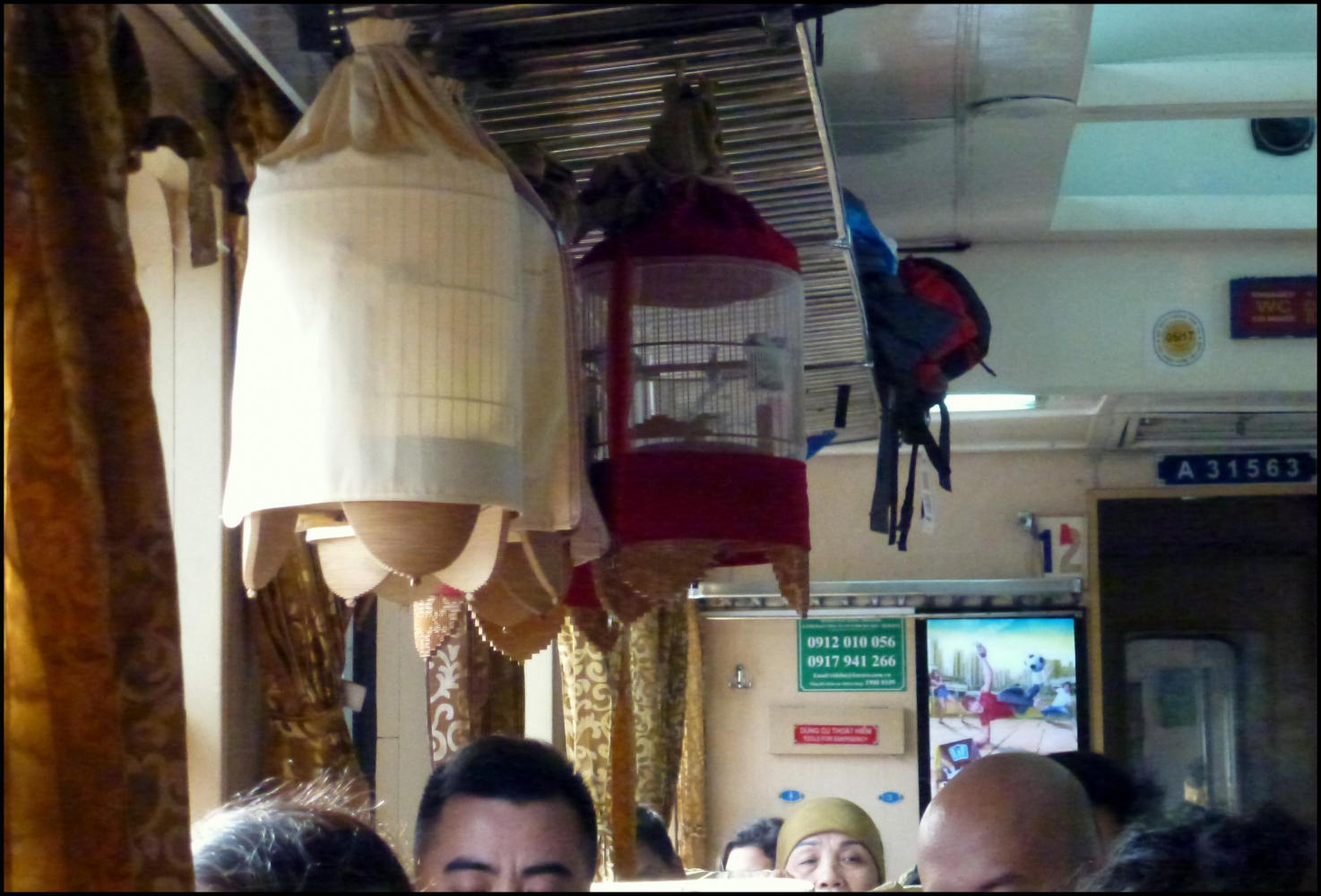December 3, 2016
How to catch a train

| Heart | 0 | Comment | 0 | Link |
IT'S a rule of Vietnam that, the more it's chaotic, the more it will work. And so it is with the train to Hanoi.
You want to know how it's done for when you too go there?
OK, Léo's Lesson...
Predictably, you have first to find your train station. Trains stop at all main towns but our observation is that there are others where they don't. The timetable is on Vietnam Railway's website, which is fortunately also in English.

| Heart | 1 | Comment | 0 | Link |
The line runs up the coast between the capital and the largest city. It's narrow gauge with men, usually men, standing beside the line with flags at every opportunity. The trains are battered by time but they work well.
You can book your ticket on your computer. Otherwise, there's a ticket office. What you can't do on the net is book your bike. Once you have your ticket, wheel your bike to the luggage office. It will be full of harassed people heaving bales wrapped in coloured plastic but in time someone will have a moment for you.
A bike causes no astonishment. Vietnamese Railways carries everything. If it will carry all those motorbikes you see, nailed into wooden frames, it will have no trouble with your bike.

| Heart | 1 | Comment | 0 | Link |
The documents are in Vietnamese, of course, but staff have enough English to say "Name here, address here".
Hand back the forms and pay the modest amount asked. In return you will get a receipt and a note of which train will carry your bike. Sometimes it will be your own train but it's more likely to be later. There aren't many trains and so your bike could turn up next day.
Wave farewell, walk back to the platform and wait for your train.

| Heart | 1 | Comment | 0 | Link |
When you booked, you'll have had the choice between hard and soft seating, less a measure of comfort than the number of people in your compartment. Opt for soft seating and settle down, hoping you won't be subjected to Vietnamese pop singers from the 1970s on the screen that will descend from the roof.
The same soft and hard classes apply to sleeping compartments. The quality is the same and the compartment will have air conditioning but there will be four in soft sleeping and six in hard. The difference beyond that is that six in one small compartment generate a vast amount of luggage, most heaped on the floor and which you will have to negotiate.
The berths are priced according to their height from the floor. The top is cheapest and least convenient but it does have more luggage space, thanks to a ledge inaccessible to others.

| Heart | 0 | Comment | 0 | Link |
You'll get as good a night's sleep as you'd expect from an old train. In the morning and throughout the day trolleys will bring breakfast, coffee (thick with condensed milk) and lunch. But expect to be woken early because Vietnam thinks 5am a normal time to get started and the Vietnamese don't consider the fact that you want to lie in any reason not to talk loudly among themselves.
Strictly, you should stay on your bunk. Wise souls work their way down the train and take an unoccupied seat. You have a ticket and that's all that interests the inspectors.
If your luck is in, you'll find your bike wheeled along the platform when you arrive. More likely, it will be there next day, as your receipt indicates. Go back to the station, find the luggage office and present your paperwork.
If you leave the bike there a further night, you'll be asked for a parking charge.
And that's it. The train is slower than the road but the so-called sleeping coaches that race up and down Highway 1 are rightly described in one guidebook as "scary". I don't hide that I like trains. I like foreign trains especially. You may not be able to talk to people - although the American we met before the journey to Hanoi was treated to lessons in Vietnamese - but you will be among them. You can walk about, wash, be brought coffee and food. You can gongoozle (an excellent word I recommend you look up) and let time pass.
We enjoyed it.
| Rate this entry's writing | Heart | 1 |
| Comment on this entry | Comment | 0 |

